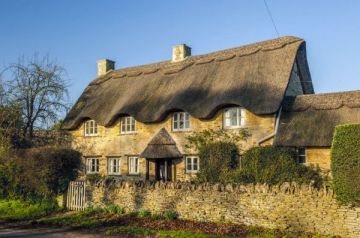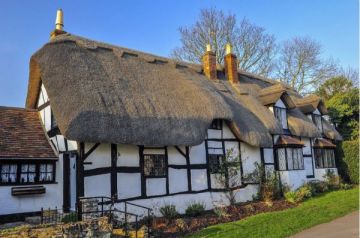Part 4 of 5
See Part 1 | Part 2 | Part 3| Part 5
On July 29, 1981, the couple were married. Well-wishers lined the streets of London and the service was transmitted from Westminster Abbey to three-quarters of a billion people worldwide. To a nation increasingly obsessed with the beautiful “Lady Di”, a fairytale myth was instantly created through the tabloids, magazines and television channels. These pressures contributed even further to the Princess’s sense of confusion.
That all was not as it should have been was evident early in the marriage. After honeymooning around the Mediterranean on the Royal yacht, the couple proceeded to Balmoral, where Charles seemed happier to spend time on his own, either painting or walking, than with his new bride. Insecure and lonely, Diana was convinced that Charles was continuing a relationship of many years ago with Camilla Parker Bowles. Though most certainly in love with Mrs Parker Bowles, whom he first met when a student at Cambridge, the Prince was determined that his marriage would succeed. He had therefore made no contact with Mrs Parker Bowles since his engagement.
Soon after the honeymoon ended, the Royal couple embarked on their first official tour together, to Wales. Diana’s natural ease with the crowds, her charm and smiles belied the fact that she still found the pressures of her new role unbearable. More than once she broke down in tears between engagements, protesting that she could not face another crowd. It was difficult for the Prince to see his wife in such distress; but on this occasion, her apparent unease was attributed to her condition. The Princess was pregnant.
Despite the difficulties that had plagued the couple since their engagement in February, their first Christmas together was a happy event. This period of relative calm, was, however, sadly short-lived. In January 1982, in what was the first in a series of cries for help, the Princess apparently threw herself down a staircase at Sandringham. She was unhurt, but the Princess’s friends later claimed that Charles was indifferent to the incident. On the contrary, he was acutely aware of her unhappiness, but he, like others, felt unable to reach her. As her reactions to a feeling of alienation intensified, Charles began to feel himself exasperated and at times did perhaps appear indifferent. After only six months of marriage, the strains were beginning to show on both parties.
In June 1982, the Princess gave birth to Prince William. Yet Diana’s unhappiness continued unabated. During this time, she suffered severely from bulimia; her weight loss was startling. She also remained convinced that her husband was continuing a relationship with Camilla Parker Bowles. Diana’s despair, combined with the Prince’s heavy workload and the pressures of his public life, drove a further distance between the couple.
The state visit to Australia in March 1983 only exacerbated the situation. The public, while warm towards the Prince, was besotted with Diana. The crowds, organised on two sides, were audibly disappointed if Charles rather than Diana worked their area. The same happened in Canada. Though pleased and impressed by Diana’s performance, Charles has admitted to feeling a little resentful of his wife’s popularity. At home, the nation’s love affair with this mystical and almost ethereal woman intensified, and the tabloid press fed the obsession with ever more intrusive pictures and stories.
Their second son, Prince Harry, was born in September 1984. As previously, Charles’s public schedule remained hectic and unforgiving, allowing him little time to spend with his family. On Diana’s insistence soon after Prince Harry’s birth, he temporarily cut back on his engagements – but for the tabloid press, it was too little too late. In contrast to Diana’s obvious affection for her children, the Prince came to be portrayed as an aloof, cold and uncaring father, with little time or thought for his family. Indifferent to his public role, the media sought only to expose the marital discord that lay behind the doors of Highgrove and Kensington Palace. While Diana grew in esteem in the public eye, Charles came to be portrayed typically as something of a “crank”.
By 1986, the Prince accepted that his marriage had begun to break down irretrievably. Unable to discuss the matter with his parents, he began to reintroduce into his life those friends whom he had earlier excluded to appease Diana. Among this group was Camilla Parker Bowles, with whom, after five years of virtually no contact, he re-ignited the earlier relationship.
Speculation about the marriage was by now rife. Both Diana and Charles were thought to be conducting their own extra-marital relationships, and stories filled the tabloid newspapers almost daily. Their private lives were made public in the most excruciating manner, with Charles personally castigated for the breakdown of the marriage. However, if this was painful, it was nothing as compared to the publication in 1992 of Andrew Morton’s biography, Diana: Her True Story.
The book, authorised by Diana herself, claimed to reveal the truth behind the couple’s sorry marriage. Within lay a depiction of Charles as a cruel, faithless husband, whose indifference had on more than one occasion driven Diana to attempt suicide. Facing such an affront, the Palace rallied behind the Prince. For the first time, Charles discussed with his mother the possibility of a separation. It was clear that both Charles and Diana were by now deeply unhappy in their marriage, and that a separation was inevitable.
With no intention to divorce, a separation was announced in 1992. Talk of further action was as yet mere conjecture. In November 1995, however, the final toll sounded for the Royal marriage, after Princess Diana spoke to Panorama, a current affairs TV programme. The Princess’s claims that there had been three people in her marriage, and her candid thoughts on her future within the Royal Family, were considered a step too far. The Queen ordered that the couple divorce, and on August 28, 1996, after 14 years, the marriage was dissolved. What had started as a fairytale, which entranced the British public and the world, had ended in disaster.
This is Part 4 of a 5 part profile
Part 1
Part 2
Part 3
Part 5

Contents copyright 1999-2001 The Royal Report
NOTE: The Royal Report is sadly no longer online.


